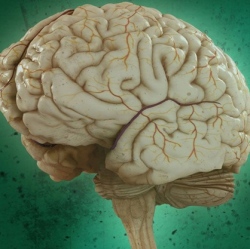
ew research in the FASEB Journal by NIH scientists suggests that a small molecule called TFP5 rescues plaques and tangles by blocking an overactive brain signal, thereby restoring memory in mice with Alzheimer’s — without obvious toxic side effects.
“We hope that clinical trial studies in AD patients yield an extended and a better quality of life, as observed in mice upon TFP5 treatment,” said Harish C. Pant, Ph.D., a senior researcher involved in the work from the Laboratory of Neurochemistry at the National Institute of Neurological Disorders at Stroke at the National Institutes of Health.
“We suggest that TFP5 should be an effective therapeutic compound.”
To make this discovery, Pant and colleagues used mice with a disease considered the equivalent of Alzheimer’s. One set of these mice were injected with the small molecule TFP5, while the other was injected with saline as placebo. The mice, after a series of intraperitoneal injections of TFP5, displayed a substantial reduction in the various disease symptoms along with restoration of memory loss.
In addition, the mice receiving TFP5 injections experienced no weight loss, neurological stress (anxiety) or signs of toxicity. The disease in the placebo mice, however, progressed normally as expected.
TFP5 was derived from the regulator of a key brain enzyme, called Cdk5. Over-activation of Cdk5 is implicated in the formation of plaques and tangles, the major hallmark of Alzheimer’s disease.
